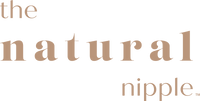
Microplastic Milk: Small Bottles, Big Scandal
Keeping your little ones safe is no easy task—whether it's breastfeeding for antibodies, keeping up with vaccinations, or limiting close contact with that older cousin who just started attending nursery school. With a not-yet-fully-developed immune system, infants enter the world extremely vulnerable. Parents devote significant effort to making the best choices to protect their babies from health risks. Turning to well-established baby bottle brands should guarantee safety, right? Unfortunately, recent evidence suggests that even trusted brands may fall short, exposing infants to potentially harmful microplastics.
The Growing Concern Over Microplastics in Baby Bottles
Microplastic contamination in baby bottles has become an alarming issue, as lawsuits against major brands have shed light on potential health risks. Leading companies such as Philips (Avent) and Handi-Craft (Dr. Brown's) face legal action in California for allegedly failing to warn parents that their polypropylene plastic bottles could release microplastics when heated. These tiny particles may pose significant risks to developing infants, potentially interfering with their digestive, reproductive, and immune systems. Despite being marketed as "BPA-free," a label intended to assure parents of safety, research shows that these bottles can still leach microplastics during common usage, such as heating breast milk or formula.
The Health Impacts of Microplastics on Infants
Microplastics can have long-term toxic effects on human health, with infants and children being particularly vulnerable. Studies suggest that microplastics could disrupt immune function, induce oxidative stress, and even affect neurological development. For example, a 2021 study published in Nature Food found that babies fed with plastic bottles may ingest over 1.5 million microplastic particles per day. This exposure is of particular concern given that infants are in critical stages of development, where even small amounts of toxins can have outsized effects on their health .
Another study published in Environmental International indicated that microplastics can cross the placental barrier, potentially exposing babies before birth. The implications of this include altered immune responses and increased risk for conditions like asthma and allergies later in life . As parents increasingly heat baby bottles, the potential for microplastic contamination in milk or formula heightens, underscoring the need for stringent safety standards.
How The Natural Nipple Prioritizes Safety
In response to these growing concerns, The Natural Nipple has designed bottles with safety at the forefront, using high-quality silicone tested rigorously for chemical safety. According to manufacturer safety reports, our silicone bottles undergo extensive testing under both European and U.S. standards to ensure that they do not release harmful substances when exposed to high temperatures.
Rigorous Safety Testing: Setting a New Standard
The safety tests on The Natural Nipple's silicone materials involve exposing the bottles to high heat (100°C) to simulate everyday scenarios like heating milk or formula. Results showed no detectable levels of harmful substances, including volatile organic compounds (VOCs) or toxic metals such as lead and cadmium. The bottles were also tested for the presence of polycyclic aromatic hydrocarbons (PAHs)—a group of dangerous chemicals often associated with plastics—with no traces detected.
For the polypropylene components, tests were conducted in accordance with U.S. FDA 21 CFR 177.1520 guidelines, which govern the safety of plastics used in contact with food. These tests revealed that chemical leaching levels were far below safety limits. Further evaluations, such as the n-Hexane and Xylene tests, confirmed minimal extractable chemicals when heated, ensuring the materials' safety in conditions simulating regular use.
Ongoing Quality Control: Ensuring Safety in Every Batch
To maintain the highest safety standards, one in every 100 bottles is retested for quality control, ensuring nothing slips through the cracks. This diligent approach demonstrates a commitment to infant health, setting The Natural Nipple apart in the baby product market.
Paving the Way for Safer Baby Products
For parents worried about microplastic risks, The Natural Nipple offers peace of mind by prioritizing non-leaching materials and rigorous testing. This shift toward safer baby products reflects growing consumer demand for transparency and higher safety standards across the industry. It’s not just about avoiding BPA anymore; it’s about addressing all potential sources of harm to ensure the healthiest start for our children.

